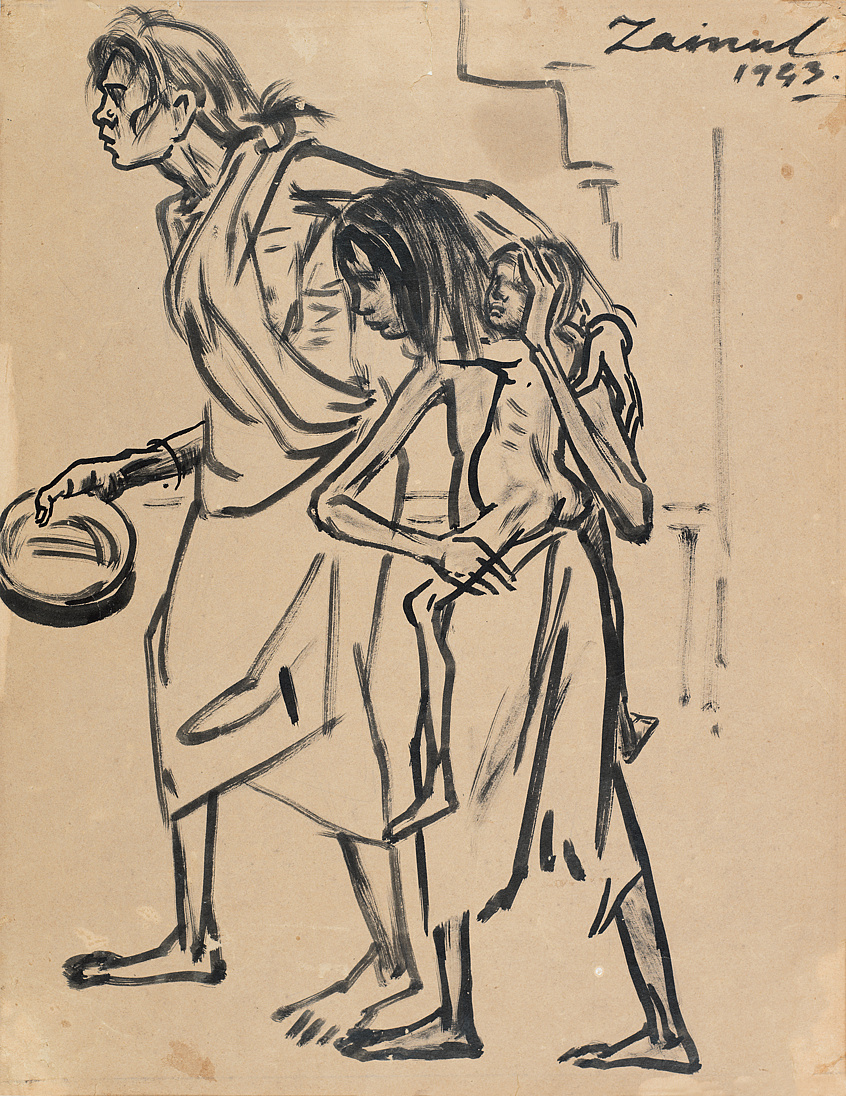The Bengal Famine 1943–44 wrecked over three million lives across undivided India during the Second World War while its colonized subjects supported the Western war effort leading to a diversion of food resources and a drain on the economy due to wartime industrial production and thousands of native troops joining allied forces.
With the threat of a Japanese invasion of Burma, the British Raj carried out the scorched-earth and boat-denial policy that resulted in mass starvation, displacement, chronic disease, as well as private hoarding and profiteering by the landowning elite of the Bengal province. Despite the catastrophic conditions arising from imperial policies, the hostile Churchill government continued to prevent the import of food grain and other foreign aid.
Chittaprosad’s graphic art expresses the struggle against colonial oppression and a revolutionary consciousness that remains of pressing importance today. Although he did not receive formal artistic training, within the swell of India’s Freedom Movement of the 1930s and 1940s, Puran Chand Joshi, Secretary of the Communist Party of India encouraged Chittaprosad to pursue his art making and left-wing political formation. As an active member of the Communist Party Chittaprosad contributed to its weekly newspapers People’s War (later People’s Age), along with fellow artists such as Zainul Abedin and photographer Sunil Janah, with whom he travelled during the Bengal famine of 1943–44. While Janah’s photographs of the mass starvation spread around the world, thereby aiding relief efforts under colonial censorship, Chittaprosad’s seminal illustrated reportage, the publication Hungry Bengal (1943), evolved as a personal journey across the Midnapore district. He conducted detailed studies of displaced and broken families, the political apathy of the landowning elite, and decomposing bodies in fields. Moving between cities, coastal delta, and the countryside of undivided Bengal, Chittaprosad and Janah witnessed death and disease in the rural terrains and within Calcutta’s streets and bazaars. People’s Publishing House in Bombay published the pamphlet Hungry Bengal, though all but one of the 5,000 copies were immediately seized and destroyed by the wartime British administration.
During the post-independence years, Chittaprosad distanced himself from the Communist Party, departed from Calcutta, and began to engage in peace building and education. He set up a puppet theater directing marionette plays for children living in Mumbai’s poorest neighborhoods.


